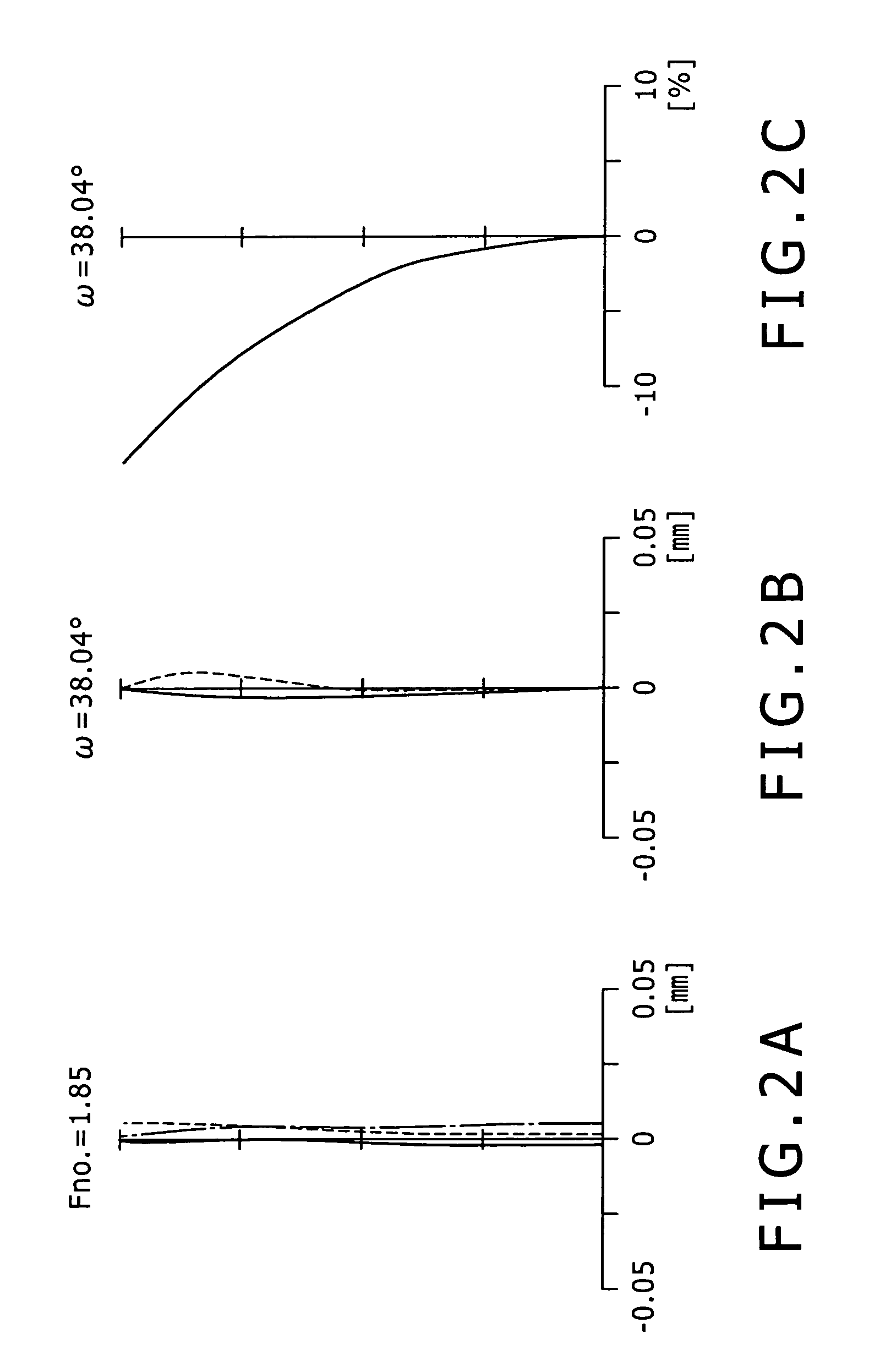Zoom lens and image pickup device
a pickup device and zoom lens technology, applied in the field of zoom lens and image pickup device, can solve the problems of hindering miniaturization and increasing the thickness of the second lens in the first lens group, and achieve the effects of wide angle of view, small size, and high variable power ratio
- Summary
- Abstract
- Description
- Claims
- Application Information
AI Technical Summary
Benefits of technology
Problems solved by technology
Method used
Image
Examples
first embodiment
[0102]FIG. 1 shows a lens configuration of a zoom lens 1 in a first embodiment.
[0103]The variable power ratio of the zoom lens 1 is set at 8.74 times.
[0104]The zoom lens 1 is formed by arranging a first lens group G1 having positive refractive power, a second lens group G2 having negative refractive power, a third lens group G3 having positive refractive power, a fourth lens group G4 having positive refractive power, and a fifth lens group G5 having positive refractive power in order from an object side to an image side.
[0105]The first lens group G1 has a position fixed at all times. The second lens group G2 is made movable in a direction of an optical axis to vary power. The third lens group G3 has a position fixed at all times. The fourth lens group G4 is made movable in the direction of the optical axis to correct a focal position resulting from power variation and perform focusing.
[0106]The first lens group G1 is formed by arranging a lens L1 having a concave surface facing the ...
second embodiment
[0123]FIG. 5 shows a lens configuration of a zoom lens 2 according to a second embodiment.
[0124]The variable power ratio of the zoom lens 2 is set at 8.87 times.
[0125]The zoom lens 2 is formed by arranging a first lens group G1 having positive refractive power, a second lens group G2 having negative refractive power, a third lens group G3 having positive refractive power, a fourth lens group G4 having positive refractive power, and a fifth lens group G5 having positive refractive power in order from an object side to an image side.
[0126]The first lens group G1 has a position fixed at all times. The second lens group G2 is made movable in a direction of an optical axis to vary power. The third lens group G3 has a position fixed at all times. The fourth lens group G4 is made movable in the direction of the optical axis to correct a focal position resulting from power variation and perform focusing.
[0127]The first lens group G1 is formed by arranging a lens L1 having a concave surface ...
third embodiment
[0144]FIG. 9 shows a lens configuration of a zoom lens 3 according to a third embodiment.
[0145]The variable power ratio of the zoom lens 3 is set at 8.71 times.
[0146]The zoom lens 3 is formed by arranging a first lens group G1 having positive refractive power, a second lens group G2 having negative refractive power, a third lens group G3 having positive refractive power, a fourth lens group G4 having positive refractive power, and a fifth lens group G5 having positive refractive power in order from an object side to an image side.
[0147]The first lens group G1 has a position fixed at all times. The second lens group G2 is made movable in a direction of an optical axis to vary power. The third lens group G3 has a position fixed at all times. The fourth lens group G4 is made movable in the direction of the optical axis to correct a focal position resulting from power variation and perform focusing.
[0148]The first lens group G1 is formed by arranging a lens L1 having a concave surface f...
PUM
 Login to View More
Login to View More Abstract
Description
Claims
Application Information
 Login to View More
Login to View More - R&D
- Intellectual Property
- Life Sciences
- Materials
- Tech Scout
- Unparalleled Data Quality
- Higher Quality Content
- 60% Fewer Hallucinations
Browse by: Latest US Patents, China's latest patents, Technical Efficacy Thesaurus, Application Domain, Technology Topic, Popular Technical Reports.
© 2025 PatSnap. All rights reserved.Legal|Privacy policy|Modern Slavery Act Transparency Statement|Sitemap|About US| Contact US: help@patsnap.com



